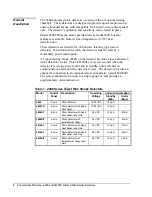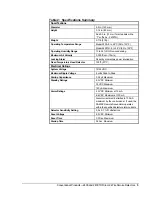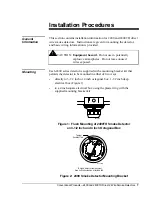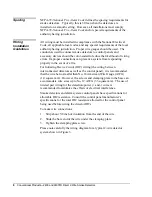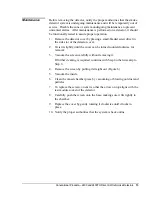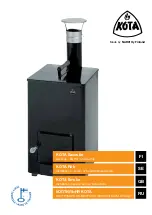
12 Conventional Products—2400 and 2400TH Direct 2-Wire Smoke Detectors
1.
Remove the detector cover by placing a small-bladed screwdriver in
the side slot of the detector cover.
2.
Twist it slightly until the cover can be turned counterclockwise for
removal.
3.
Insert the NO ALARM end of the test card fully into the test slot
(Figure 6), then slide it counterclockwise until it stops.
4.
The detector should not alarm after 20 seconds.
5.
Remove the test card by sliding it clockwise before removing.
6.
Insert the ALARM end.
7.
The LED should latch on within 20 seconds.
An alarm should also be initiated at the Panel 6.
8.
Put the cover back by gently rotating it clockwise until it locks
in place.
The MOD400R or MOD400 test module is used with an analog or digital
voltmeter to check the detector sensitivity as described in the test module
manual.
1.
Set the aerosol generator to represent 4%/feet to 5%/feet obscuration
as described in the Gemini 501 manual.
2.
Using the bowl-shaped applicator, apply aerosol until unit alarms.
Direct Heat Test
To test the bimetallic thermal collector on the 2400TH:
1.
Use a low powered heat gun or blow dryer, and aim the heat source
across the detector.
2.
Hold the heat source about 12 inches (30 cm) from the detector to
avoid damaging the plastic.
3.
When the heat rises to greater than 135°F, the detector will latch
in alarm.
4.
After the test, the bimetallic collector will self restore.
Detectors that fail these tests should be cleaned as described in the
Maintenance section of this technical bulletin and retested. If the detectors
still fail these tests, they should be returned for repair as detailed in the
Material Management Manual (FAN 627.5).
Calibrated Test
Card (R59-18-00)
Test Module
(MOD400R or
MOD400)
Aerosol
Generator
(Gemini 501)
Testing the
2400TH Only




